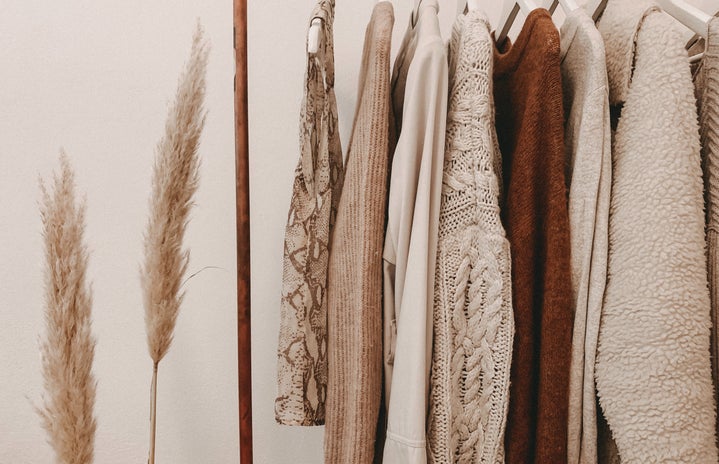Like many of us, my closet is full of clothes that I don’t wear anymore or clothes that I’ve grown out of, most still in excellent condition. Previously, my mom would either cut them up and use them as rags, pass them down to family friends, or donate them to the thrift store. However, during the winter break, I stumbled upon a video of a girl selling her clothes on Poshmark and Depop. I decided to give it a try, since my clothes would go to a new home and I would also make some money.
I had to familiarize myself with the platforms first so I knew what I was getting into. Here is a quick summary of how each platform works:
Depop:
- Cuts: 10% app fee + 3% + 30 cent PayPal fee
- 4 picture limit + 1 video per listing
- Instagram-like layout where you can “like” items and use up to 4 hashtags in your description to gain exposure
- You are responsible for figuring out your shipping (it’s best to send your items with tracked shipping, which gives you seller protection, however sometimes I send my small items untracked with stamps)
- Must be wary of disputes, low ballers and scammers
Poshmark:
- Cuts: $3.95 (items under $20) or 20% app fee (items $20 and over) + tax
- 16 picture limit
- Buyers can “like” items, and sellers can send offers to them
- You don’t need to worry about shipping. Poshmark will email you a shipping label to print out when you make a sale, which you can tape onto your package and drop off at your post office.
I spent an entire week purging my family’s closets of unwanted clothing, taking good quality pictures and uploading them onto Depop and Poshmark. I then bought a pack of compostable poly mailers from Amazon and signed up for a small business Canada Post account. Then I waited for sales to come. A week goes by, and no sales. I was initially frustrated about not getting sales instantly, but I realized that as a new seller, it was hard to bring buyers to my shop because I had no reviews and no following, giving potential buyers no sense of trust. However, I did not give up and refreshed my listings daily to gain exposure on the platforms. It took around 2 weeks to make my first sale on Depop, and I ended up selling one of my mom’s old dresses to someone in British Columbia! Soon, sales began to trickle in on both platforms, and my shop started to gain traction.
Here are some lessons I learned from this journey. At first, I asked potential buyers to message me about shipping before buying on Depop and only shipped within Canada, but I didn’t make many sales that way. Then, I made my shipping a set amount and expanded worldwide, and I found my sales increased a lot. Something else I wasn’t aware of was that Poshmark taxed the 20% app fee, and I ended up making peanuts on a t-shirt. However, this is something I learned from and began to price my items accordingly. Being transparent about my items (e.g. disclosing stains and rips) is crucial in building trust in my buyers and maintaining a five-star rating, ensuring they know exactly what they’re buying.
Additionally, I learned that third-party shipping services such as Chit Chats and Stallion Express could be great alternatives as their prices are much lower than Canada Post (up to 75%!). Not only does this lower the cost for your buyers and make them more likely to buy, but it also increases your sales. The only downside is that their shipping times are a little longer than Canada Post, which may affect your reviews.
All in all, I’d say one of the best parts of this journey was seeing where my stuff was shipping to and having my buyers message me saying that they love their items! I also found myself buying some clothes from these platforms and changing my perspective on making small, environmentally-friendly lifestyle changes by choosing to shop and sell sustainably. Although I faced an initial learning curve and made some mistakes along the way, selling my old clothes changed my life and habits for the better.


